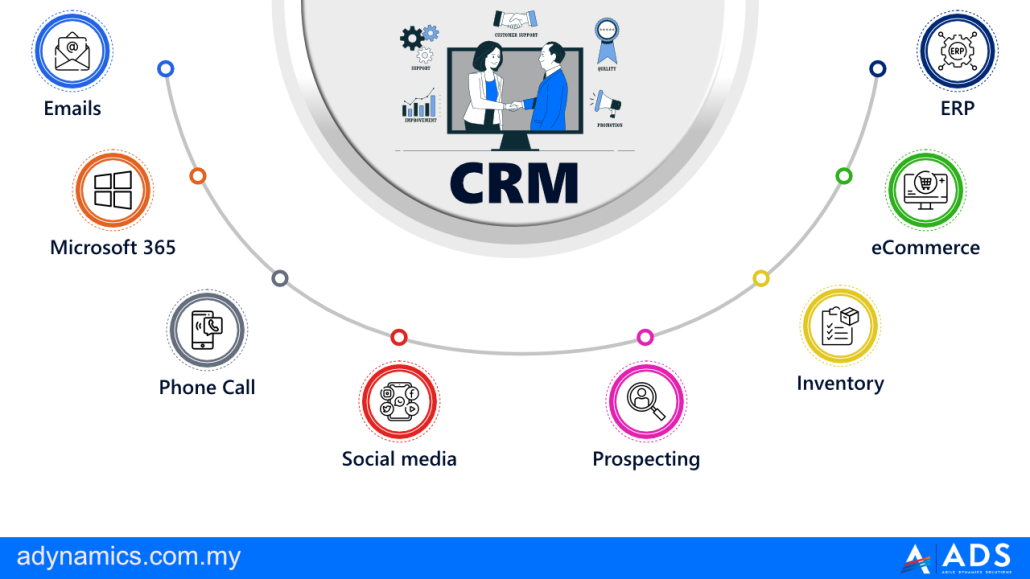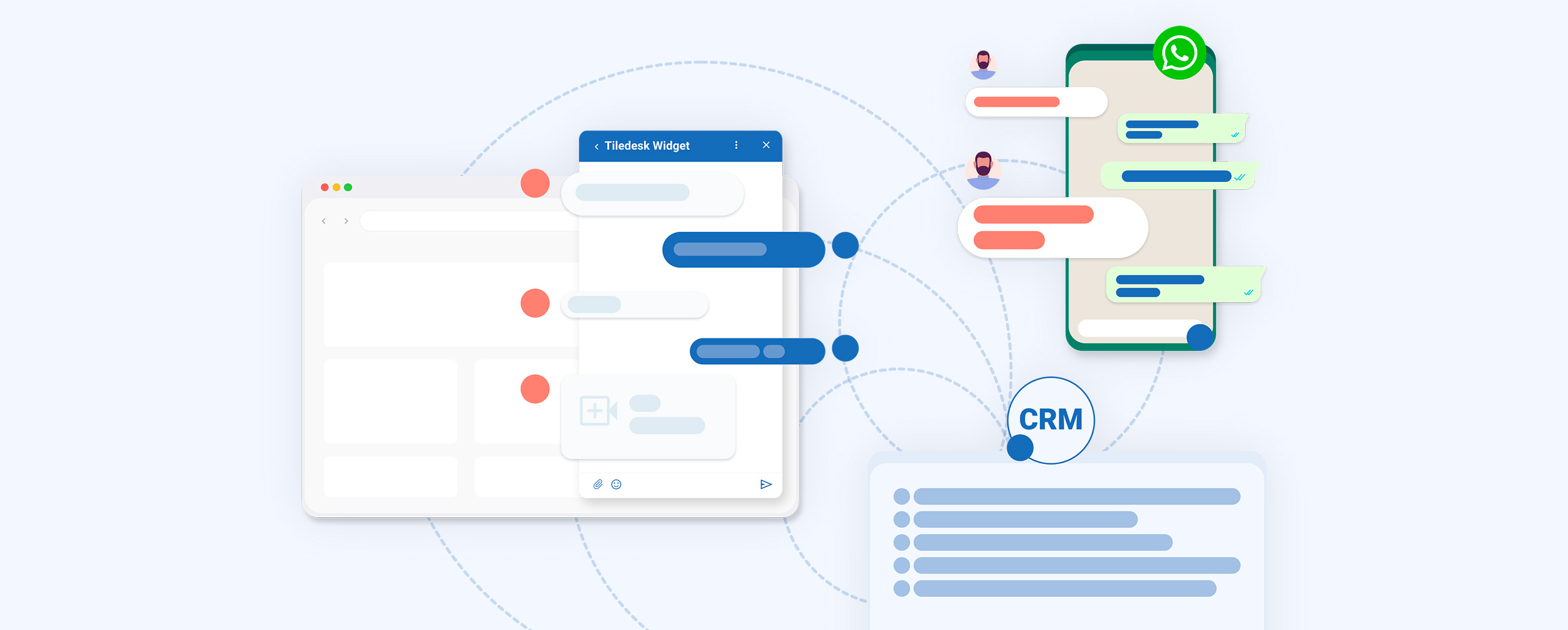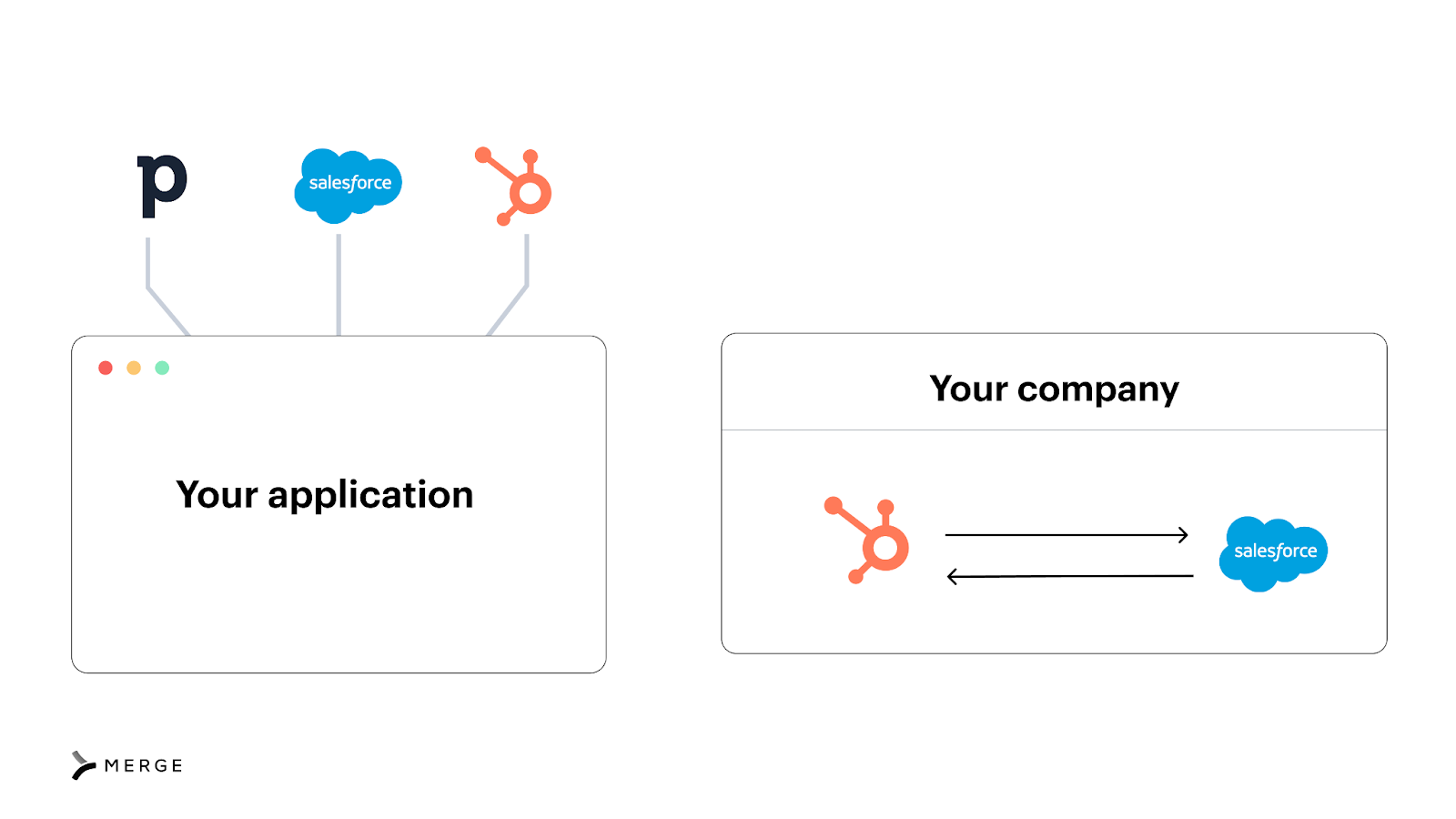crm api integration unlocks new possibilities for businesses looking to stay connected and agile in a fast-evolving digital landscape. By streamlining how different systems communicate, it lets organizations automate processes, reduce data silos, and enhance customer experiences in ways that feel almost effortless.
At its core, crm api integration connects customer relationship management platforms with other tools and services, creating a unified workflow that improves efficiency and decision-making. From syncing contacts and tracking sales activities to automating marketing campaigns and generating insightful reports, this integration empowers teams to work smarter and deliver better results.
Overview of CRM API Integration
Customer Relationship Management (CRM) API integration refers to the process of connecting a CRM platform with other software systems, applications, or services using application programming interfaces (APIs). The main objective is to ensure seamless data flow and interoperability between CRM and other business tools, enabling organizations to automate processes, improve productivity, and gain actionable insights. Integrating CRM APIs into an organization’s workflow is essential for breaking down data silos and achieving a unified view of customer interactions across multiple touchpoints.
CRM API integration delivers significant business value by streamlining operations, reducing manual effort, and enhancing the customer experience. By enabling disparate systems to communicate and share real-time data, organizations can make more informed decisions and quickly adapt to changing business needs.
Common Scenarios Where CRM API Integration Is Essential
Integrating CRM APIs becomes indispensable in various business situations. Some of the most common use cases include:
- Synchronizing customer data between marketing, sales, and support platforms
- Automating lead assignment and follow-up workflows
- Integrating e-commerce platforms to enhance customer purchase history tracking
- Connecting with communication tools like email, SMS, and chat platforms for personalized outreach
- Generating unified reports by combining data from multiple sources
- Facilitating seamless data sharing with third-party partners or vendors
Major Types of CRM APIs
CRM vendors typically offer a variety of APIs to cater to different integration needs. Understanding the main API types can help businesses choose the right approach for their technical environment and objectives. The most common types are REST, SOAP, and GraphQL APIs, each serving specific integration scenarios.
Examples of REST, SOAP, and GraphQL CRM APIs
This table Artikels typical API types, their descriptions, common use cases, and examples from popular CRM platforms.
| Type | Description | Use Case | Popular CRM Example |
|---|---|---|---|
| REST | Representational State Transfer; a lightweight, stateless API protocol using HTTP methods for data access and manipulation. | Integrating web applications to fetch and update customer data in real-time. | Salesforce REST API, HubSpot API |
| SOAP | Simple Object Access Protocol; a protocol using XML for structured message exchange, often in enterprise environments. | Legacy system integration and complex transactions requiring strict compliance. | Microsoft Dynamics 365 SOAP API |
| GraphQL | A flexible query language allowing clients to request exactly the data they need, reducing over-fetching. | Custom dashboards or apps requiring specific data sets from the CRM. | Zendesk Sunshine GraphQL API |
Key Benefits of CRM API Integration
CRM API integration brings a range of advantages that drive operational efficiency and business growth. With the right API connections in place, companies can create more dynamic, responsive, and customer-centric experiences.
Main Advantages of CRM API Integration
Businesses that leverage CRM API integration gain benefits such as improved data accuracy, streamlined processes, and enhanced analytics. The following points highlight the most valuable outcomes:
- Real-time data synchronization across all connected systems
- Automated workflows that eliminate repetitive manual tasks
- Centralized and consistent customer records
- Faster response times through integrated communication tools
- Advanced reporting and actionable analytics
- Reduced IT overhead and maintenance costs
- Better scalability to support business growth
Common Use Cases for CRM API Integration
CRM API integration supports a broad spectrum of real-world business applications. It enhances efficiency across industries by simplifying data management, automating customer interactions, and improving decision-making.
Practical Applications in Business Processes
Below is a table that presents typical use cases, the relevant industry, the impact of integration, and specific examples.
| Use Case | Industry | Impact | Example |
|---|---|---|---|
| Lead Generation and Nurturing | Marketing | Automates lead capture and follow-ups, increasing conversion rates | Integrating CRM with landing page forms and email automation platforms |
| Order Management Integration | Retail & E-commerce | Provides a unified order and customer view, reducing fulfillment errors | CRM connected to e-commerce backend for seamless tracking |
| Customer Support Ticketing | Customer Service | Improves response times and issue resolution by syncing support systems | CRM linked with helpdesk software like Zendesk |
| Billing and Invoicing Automation | Finance | Speeds up payment cycles and reduces manual entry errors | CRM integrated with accounting software such as QuickBooks |
| Partner Relationship Management | B2B | Enhances collaboration and real-time data sharing with external partners | APIs connecting CRM to partner portals |
Essential Steps for Successful CRM API Integration
Implementing CRM API integration involves deliberate planning and execution to ensure data integrity, security, and functional alignment. Following a structured process helps minimize risks and achieves a seamless connection between systems.
Standard Procedures for CRM API Integration
Here is a breakdown of the necessary steps for a successful CRM API integration:
- Define business objectives and integration requirements
- Audit existing systems and identify data sources and endpoints
- Map data fields and establish data transformation rules
- Evaluate and select appropriate authentication and security standards
- Develop and test API connections in a controlled environment
- Monitor and validate data synchronization and workflow automation
- Deploy integration and provide user training
- Establish ongoing support and maintenance procedures
Prior to integration, it is important to consider factors like data mapping to ensure consistent field alignment between systems, as well as robust security controls to protect sensitive information during transmission and storage.
Popular CRM Platforms and Their Integration Capabilities
The ability to integrate seamlessly is a key differentiator among leading CRM platforms. Top solutions offer robust APIs, flexible authentication methods, and accessible developer resources to streamline integration efforts.
Comparison of API Integration Support and Features
The following table compares popular CRM platforms regarding their integration-related features:
| Platform | API Types Supported | Authentication Methods | Developer Resources |
|---|---|---|---|
| Salesforce | REST, SOAP, Bulk, Streaming | OAuth 2.0, JWT, Session ID | Comprehensive documentation, Trailhead, Forums |
| HubSpot | REST | OAuth 2.0, API Keys | API docs, Community, SDKs |
| Microsoft Dynamics 365 | REST, SOAP, Webhooks | OAuth 2.0, Client credentials | Microsoft Learn, Developer Center |
| Zendesk | REST, GraphQL | OAuth 2.0, Basic Auth | API Reference, Developer Portal |
| Pipedrive | REST | API Token | API Docs, Live Examples |
Authentication and Security in CRM API Integration
Securing API integrations is vital for protecting sensitive customer and business data. Leading CRM APIs support advanced authentication protocols, such as OAuth 2.0, and enforce encrypted data transmission to avoid unauthorized access and breaches.
Critical Security Measures and Authentication Protocols, Crm api integration

Authentication verifies the identity of users and systems accessing the API, while authorization controls their permissions. It’s essential to follow industry best practices to ensure the safety and integrity of integrated solutions.
Always use strong authentication (such as OAuth 2.0), enable SSL/TLS encryption for all API communication, limit API permissions based on the principle of least privilege, and regularly audit access logs to detect suspicious activity.
Challenges in CRM API Integration and How to Overcome Them
Despite its advantages, integrating CRM APIs can present technical and organizational challenges. Recognizing these obstacles early enables teams to proactively address issues and ensure smooth integration.
Common Obstacles and Solutions in CRM API Integration
Below is a list of frequent challenges along with practical mitigation strategies:
- Data inconsistency between systems — Establish standardized data formats and robust data mapping processes
- API rate limits restricting integration performance — Implement efficient data batching and schedule data syncs during off-peak hours
- Complex authentication requirements — Leverage standardized identity management solutions and keep credentials secure
- Versioning issues with evolving APIs — Monitor API updates and maintain backward compatibility in integration code
- Limited internal technical expertise — Invest in training or partner with experienced integration consultants
- Poor error handling — Build comprehensive error monitoring and recovery procedures into integration workflows
Best Practices for Maintaining and Scaling CRM API Integrations
Proper maintenance and scalability planning are essential to ensure CRM API integrations remain reliable and capable of supporting business growth. Adopting best practices helps avoid disruptions and maximizes the long-term value of integration investments.
Strategies for Keeping Integrations Efficient and Scalable
Ongoing maintenance tasks, as well as proactive scalability planning, are necessary to future-proof CRM API integrations. The following table illustrates how to organize these activities by task, frequency, responsible role, and tools used.
| Maintenance Task | Frequency | Responsible Role | Tools Used |
|---|---|---|---|
| Monitor API performance and error logs | Daily | DevOps Engineer | API monitoring tools (e.g., Postman, Datadog) |
| Review and update API security policies | Quarterly | Security Analyst | Security audit frameworks |
| Test integration workflows after CRM system updates | After each update | QA Engineer | Automated testing tools |
| Scale infrastructure to handle increased API calls | As needed | IT Operations | Cloud management platforms |
Tools and Resources for CRM API Integration

A diverse ecosystem of tools and resources supports CRM API integration efforts. Selecting the right tools can accelerate development, simplify testing, and ensure robust, maintainable connections.
Useful Tools, Libraries, and Resources for CRM API Integration
The table below provides an overview of commonly used solutions, their core functionalities, compatibility, and pricing models.
| Tool/Resource | Functionality | Platform Compatibility | Pricing |
|---|---|---|---|
| Postman | API development, testing, and monitoring | All major CRM APIs | Free and paid plans |
| MuleSoft | API orchestration and integration platform | Salesforce, Microsoft Dynamics 365 | Enterprise pricing |
| Zapier | No-code workflow automation and API integration | HubSpot, Pipedrive, Salesforce | Free tier and subscriptions |
| Swagger (OpenAPI) | API design and documentation | All REST APIs | Open source |
| Talend | Data integration and transformation | Multiple CRM platforms | Open source and enterprise |
| Microsoft Power Automate | Workflow automation between CRM and other services | Microsoft Dynamics 365, Salesforce | Subscription-based |
Future Trends in CRM API Integration

The landscape of CRM API integration continues to evolve, influenced by technological advancements and shifting business needs. Several emerging trends are likely to shape the next generation of integrations and unlock new value for organizations and customers.
Innovations and Emerging Technologies Shaping CRM API Integration
Artificial intelligence and machine learning are enhancing CRM integrations by delivering predictive insights, personalized recommendations, and intelligent automation with minimal human intervention. Low-code and no-code integration platforms are democratizing API connectivity, enabling non-technical users to create and manage integrations through visual interfaces. Additionally, increased regulatory scrutiny is driving greater emphasis on data privacy and security, leading to the adoption of advanced encryption, granular access controls, and real-time monitoring.
For instance, platforms like Salesforce are embedding AI-driven workflow automation, while Microsoft Power Platform is making integration more accessible with no-code connectors. As organizations continue to embrace hybrid and multi-cloud environments, the demand for flexible, secure, and scalable CRM API integration solutions is expected to rise.
Final Conclusion
In summary, crm api integration transforms the way businesses operate by bridging data and processes across platforms. It not only streamlines operations and enhances security, but also paves the way for future innovations. As technology continues to advance, mastering crm api integration will remain a valuable asset for organizations aiming for growth and resilience in a competitive market.
Question Bank
What is crm api integration used for?
It is used to connect CRM platforms with other software, automating data sharing, processes, and communications between systems.
Is crm api integration secure?
Yes, when implemented correctly with proper authentication, encryption, and access controls, crm api integration is secure.
Do I need coding skills for crm api integration?
Basic coding knowledge can help, but many platforms offer low-code or no-code solutions to simplify the integration process.
Can crm api integrations be customized?
Absolutely, integrations can be tailored to suit unique business needs, workflows, and security requirements.
How do I troubleshoot issues with crm api integration?
Start by checking API documentation, reviewing error logs, verifying authentication credentials, and consulting support channels if needed.
